Robert Partin of Jamestown
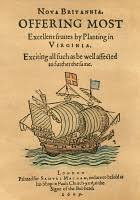
Virginia Company broadside, 1609.
In early August of 1609, when Robert Partin arrived at Jamestown, he probably thanked God that he made it there alive. In May 1609, the Virginia Company had reorganized and gained a second charter and began recruiting for a third supply of settlers to the colony of Virginia. It is believed that Robert was an employee of the Virginia Company and ventured his person to joining the third supply. Colonists such as him were lured by the promise of a new life, shares of company stock for having joined the venture, and various supplies, as well as land after their terms of service to the Company ended. Some of these colonists no doubt had some apprehensions about leaving their homes, family and loved ones for a new, very distant land across the Atlantic. No knew what they would encounter on their voyage over or what they would come into upon arrival. But there was the allure of a new start, their own land at the conclusion of their terms of service, and the belief that they would be the lords of their own destiny.
Robert Partin’s background in England is not well documented. He was born about 1587 in southwestern England, likely around the Bristol or Somerset area. What his trade or profession was is unknown. To have joined this journey he must have been of some importance, had an occupation in some trade, or was just a young man looking for the possibilities that awaited him in the New World. He joined the Second Virginia Company as an employee or indentured servant and set sail with a fleet of ships from Woolwich, a port town just south of London. Included in the fleet were the Sea Venture (the largest ship in the convoy), Diamond, Falcon, Unity, Lion, Blessing, and a small pinnace.
There were some delays that the fleet dealt with at the offset. Shortly after setting sail on June 2, 1609, the fleet faced contrary winds and had to stop in Falmouth to wait for more favorable winds. Later in that first week of June, the group of ships was able to set sail for Virginia. The voyage, once started, faced good weather and fair skies. Robert probably watched England disappear in the distance as he thought about leaving his family and loved ones; he likely felt apprehensive about his decision to go to a strange new land but also probably had his sights set on what he imagined he may encounter in Virginia and the new life he hoped to forge.
Initially things looked good for the voyage. The fleet enjoyed a good breeze and clear skies both night and day. Then things began to look ominous. At some point on the trip across, two of the ships were hit with disease and thirty-two people who had died were cast overboard to prevent the spread of disease and the smell of rotting corpses. On July 23, things began to take a drastic change. That night the weather began to change. Clouds began building and the winds were picking up. The next day, the Third Supply fleet had sailed headlong into a hurricane and was ravaged by the storm. The pinnace sank and lost all onboard. The Sea Venture wrecked on the Island of Bermuda and would not be seen again until May of 1610. The other ships were dealt a drubbing. The Blessing, which Robert Partin sailed on, was battered by the ‘“tail of the West Indian hurricane”, but after forty-four hours of struggle the clouds broke’, said author Jennifer Potter. The remaining ships were also battered in the cyclone. These ships all eventually found each other and limped on to their destination of Virginia.
Robert and the other colonists probably did not expect to experience something of the nature that the hurricane presented them, but then again, not many of them had ever sailed at sea or knew of the dangers that lurked on the open waters. Onward they pressed until they reached the Chesapeake Bay in early August, passed Point Comfort, and made a b-line right for Jamestown. About 300 settlers came ashore with few supplies. When they arrived, the fort was in good repair thanks to the leadership of Captain John Smith.
It just so happened that Robert and his fellow adventurers arrived at what would be one of the worst times to be living in Jamestown. In October of 1609, John Smith went back to England after a mysterious gunpowder explosion incapacitated him. This would be a massive blow to a colony that could use his sense of discipline. That winter of 1609 and 1610 would be known as the “Starving Time”. At the beginning of winter at Jamestown, there were approximately 500 settlers living there. By the spring, there would barely be sixty left alive. During this winter of dire straits, the colonists faced massive food shortages, which led to bouts of starvation and disease, and violence from the surrounding native tribes as Chief Powhatan had ordered his warriors to attack any settlers found outside of the protection of the fort walls. One of the best descriptions of what occurred that winter was written by George Percy who had become President of the Council after the departure of John Smith. In his A True Relation, Percy says:
A world of miseries ensued, as the sequel will express unto you, insomuch that some, to satisfy their hunger, have robbed the store, for the which I caused them to be executed. Then having fed upon horses and other beasts as long as they lasted, we were glad to make shift with vermin, as dogs, cats, rats, and mice. All was fish that came to net to satisfy cruel hunger, as to eat boots, shoes, or any other leather some could come by. And those being spent and devoured, some were enforced to search the woods and to feed upon serpents and snakes and to dig the earth for wild and unknown roots, where many of our men were cut off and slain by the savages. And now famine beginning to look ghastly and pale in every face that nothing was spared to maintain life and to do those things which seem incredible, as to dig up dead corpse out of graves and to eat them, and some have licked up the blood which hath fallen from their weak fellows. And amongst the rest, this was most lamentable that one of our[s], Collines, murdered his wife, ripped the child out of her womb and threw it into the river, and after chopped the mother in pieces and salted her for his food.
This is what occurred at Jamestown. This is what Robert and the other survivors of the “Starving Time” endured. It is amazing that he survived such trials and tribulations. It makes one wonder, what did he do himself to survive? In 2012, archaeologists at Jamestown Rediscovery unearthed the remains of a teenaged girl who became dubbed “Jane”. She was murdered, cut up and eaten during the “Starving Time”. Is it possible that Robert was involved in acts of cannibalism to survive? Of course it is. When confronted with the real prospect of dying of starvation, people will go to extreme lengths to survive. He could have been one of those brave enough to venture outside of the fort to dig for roots and other plants to survive. Whatever he did to survive, Robert had the strength and fortitude to make it through a winter at Jamestown that saw well over an 80% death rate. When Sir Thomas Gates and the survivors of the Sea Venture reached Jamestown in May of 1610, the sight they beheld was astonishing. The colony was a shell of what Gates expected and he determined to take the colony back to England. In the nick of time, Lord De La Warr arrived with a relief fleet with new colonists and fresh supplies and saved the colony from disintegration. Robert would continue on with the colony and survived the next decade of struggles and growth as the colony ebbed up and down, but the colony began to prosper and gained a foothold in Virginia.
In 1617, the woman Robert Partin would marry, Margaret, arrived from London aboard the ship George. It is unknown when they married, but it was likely around 1619. Robert and Margaret would have four children; Avis (born about 1619), Rebecca (born about 1622), Robert II (born in 1624) and Debora[h] (born about 1625). Records show that in 1620, Robert received a patent for acreage in the corporation of Henrico, but it is believed the family resided at West and Shirley Hundred.
The year 1622 yet again brought calamity to Virginia and the Partin family. On March 22 of that year, Powhatan Indians under the leadership of Opechancanough attacked colonists at multiple settlements including Henricus, Bermuda Hundred, Martin’s Hundred and Berkeley Hundred. Luckily, the settlement of West and Shirley Hundred where the Partins were living was spared during the attack. Elsewhere though, about 347 colonists perished in the uprising, about one-third of the population of the colony. Again, miraculously, Robert survived yet another event that claimed the lives of many. He was probably beginning to think to himself that he must be living on borrowed time.
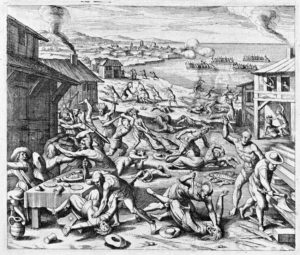
Massacre of 1622, engraving by Matthäus Merian, 1634. Image courtesy of Encyclopedia Virginia.
In 1624, the Virginia Company was disbanded by King James I and he ordered a muster to be taken to record the colony’s inhabitants and provisions, one of the first censuses taken in the New World. This census came to be called the Muster of 1624/25. The Muster date for Robert Partin was taken 22 January 1624/25. In the Muster, it lists him as being located at West and Shirley Hundred in the corporation of Charles Cittie , the head of house, and aged 36 years. His wife, Margaret is listed as 36 years of age as well. Their children are listed as well; Robert, (4 months old), Avis (5 years old) and Rebecca (2 years old). The building record shows that he had one house. The arms category records him as having two pounds of powder, twenty pounds of lead shot, four pieces of armor and one snaphance. The food and livestock category lists him having fifty bushels of corn, three neat cattle, one swine, and nine poultry. In the notes section it states “Neat Cattell yong and old”. From this evidence, one can see that Robert had established himself well with a home, arms and armor, and was beginning to amass some livestock. He likely was also a planter of tobacco as many in the colony were, tobacco being Virginia’s cash crop.
Also listed in the Muster is Thomas Hale (Hayle), a servant of the Partin family. This servant became the source for a very despicable act and what is probably a first in the history of our country. As the records of the General Court at Jamestown states:
A Courte held the 4th of June 1626 beinge present S’r George Yardley, knight, Governor and Capt. Generall &c, Capt ffrancis West, Doctor Pott, Capt Smith. At this courte Thomas Hayle aged 21 yeeres being ye sone of Symon Hayle of the p’sh of Sct. Mary, Somersett, in London, Porter, was indicted and aranger upon ye several indictments for ye rape and ravishment of fower Mayden children for w’ch his offence he was found guilty by the judge and had Judgment of death pronounced against him according to the lawe.
By 1627, Hayle had been executed for his heinous act. But new evidence appeared that involved Margaret Partin, Robert’s wife. The records for the General Court of July 3, 1627 presents an order that states “Margaret Partin the wife of Robert Partin of Sherly Hundred for concealing the offence of Thomas Hayle lately executed, & for because she revealed not the name when it first came to her knowledge but did ernestly w’thstand that is should any ways be made knowne, shall be whippd & receave fortye strypes.” That sounds like a pretty harsh punishment for a woman, but an incident such as this recalls the case of Anne Burras Leydon, another Jamestown colonist. Anne was whipped for having improperly sewed shirts for members of the Virginia Company, “for wch fact the said Ann leyden and Jane Wright were whipt, Anne leyden beinge then wth childe (the same night therof miscarried).” What could have led Margaret to cover for her servant? There is one source that believes Thomas was her brother, which could be true. But to date, no evidence has been found to support that claim.
Having this stain on his family, Robert Partin was prompted to settle his family in Isle of Wight County. On April 13, 1642, Robert and his son, Robert II, sold his Henrico County land to another individual. On April 18, 1644 the colony was attacked again by Powhatan Indians under Opechancanough. More than 400 colonists were killed, but this time that number only represented about a tenth of the population as the colony had grown significantly since the massacre in 1622. Yet again, Robert escaped deaths grip. At this point he was about 56 years old, an age considered to be advanced in that time period. At some point, Robert and his family moved to Surry County, as he conveyed his Isle of Wight plantation to a John Seward. Robert Partin I died in about 1650 in Surry County. Margaret’s date of death and place are unknown.
In looking at his life, one would say, wow this guy must have been tough as nails to have survived an ocean voyage that was ravaged by a hurricane, two Indian massacres, death and starvation at Jamestown, and controversy in his family. His life is not only marked by these events, but also in that he took a gamble to come to a new land, with little to his name and with promises that he was not sure would be fulfilled. But he persevered and went on to own land and livestock, have a family, and lived what would be considered a good long life for the time period, having died at around the age of 63. And his legacy? Survival and many generations of ancestors who can claim descent from him.
References:
Haile, Edward Wright. Jamestown Narratives: Eyewitness Accounts of the Virginia Colony The First Decade: 1607-1617. Champlain, Virginia: RoundHouse, 1998.
Jamestown 1624/5 Muster Records, Virtual Jamestown, The Institute for Advanced Technology in the Humanities, University of Virginia. Accessed November 13, 2020. http://www.virtualjamestown.org/Musters/muster24.html.
Kelly, Joseph. Marooned: Jamestown, Shipwreck, and a New History of America’s Origin. New York: Bloomsbury Publishing, 2018.
McCartney, Martha W. Jamestown People to 1800: Landowners, Public Officials, Minorities, and Native Leaders. Baltimore: Genealogical Publishing Company, 2012.
“Minutes of the Council and General Court 1624-1629 (Continued).” The Virginia Magazine of History and Biography 25, no. 4 (1917): 337-51. Accessed November 13, 2020. http://www.jstor.org/stable/4243625.
“Minutes of the Council and General Court: 1622-1629 (Continued).” The Virginia Magazine of History and Biography 28, no. 2 (1920): 97-108. Accessed November 13, 2020. http://www.jstor.org/stable/4243761.
Potter, Jennifer. The Jamestown Brides: England’s “Maids for Virginia”. New York: Oxford University Press, 2019.
Robert Partin Jamestown Colony 1609, partinfamily.org.
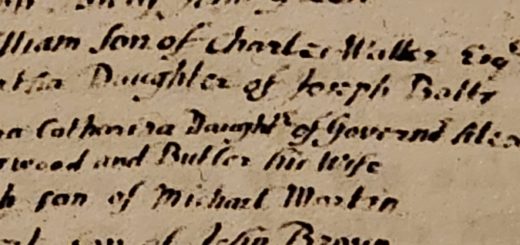
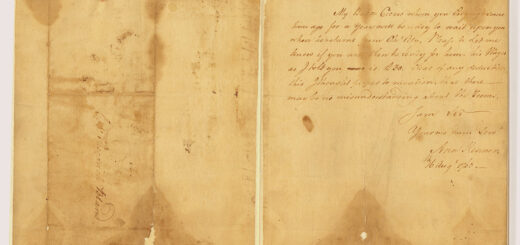

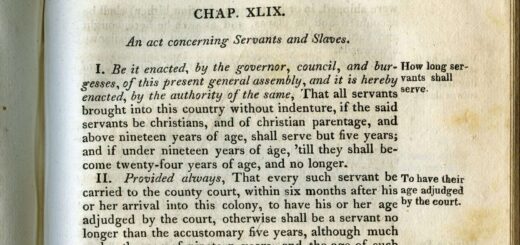
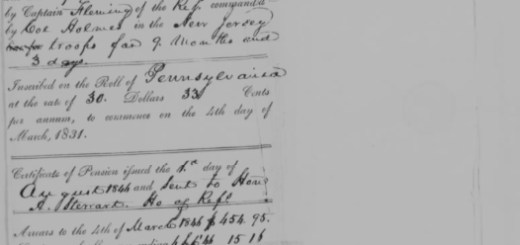

Interesting read!
Very interesting! You have done a very good job. Thank you for this info.
Thanks Wanda, glad you found the article of interest. Don’t forget to subscribe to the website if you haven’t already. Love ya.
Thank you Todd for such an involved story of Robert and his family. My wife’s maiden name is Partin. The genealogy I have been doing has not provided as complete a history as you have shared. Today in our most recent visit to Jamestown, I purchased books that have very little when compared to your written history.
Thanks for your response Loren. Yeah, if you’re looking for lesser known individuals, it’s harder to find information on them in the materials that Jamestown has. One good source they do have there though is the Jamestown People to 1800 by Martha McCartney. Other than that, you have to really do some leg work to research ancestors more. I am a descendant myself of Robert Partin of Jamestown. If you’re looking for more information on ancestors, I’d recommend the Virginia Magazine of History and Biography and the William and Mary Quarterly, those are VERY good sources to look up information. To get to many of the periodicals from Virginia, check out JSTOR, you can use that site to gain access to these quarterly journals. Happy hunting!!!
Todd;
I have worked my genealogy back to Robert Partin through my dad. My maiden name is Partin. Thank you so much for this information. I am so humbled to know that I come from such strong folks.
G
Thanks for checking out my article, Gina!!! Make sure you go to the link on my site for my Facebook page and follow me.
Thats cool, i guess im a direct descendant. Clay Stephen Partin
Excellent write up of our Robert. Thank you. Usually people who’ve written about Robert for family history and Part*n genealogy, including family trees, don’t include sources, so I genuinely appreciate your reference list and followup comments. I’m co-admin of the private FB group “Parton Partin Partain Parten Ancestor DNA Project” which is affiliated with an Ancestor Project in GEDmatch as well as the FTDNA Partin Surname Y-DNA Project. As you noted, very little information about Robert’s family and history can be found, so we’re going the DNA route to connect all Part*ns Back to Robert and his son. We welcome anyone with our surname, by any spellling, whether you’re working on your family tree or not, or tested your DNA or not. BTW, I used this blog entry in our FB group as a good example of “show your sources.” Thanks for sharing your interest in our Robert Partin.
Hi Donna, sorry it took so long for me to respond. Thanks for checking out my article and thanks for using my blog in your facebook group. If you haven’t already, go to my Facebook page and follow me on there, there should be a link to the Facebook page on my site here. I myself am a descendant of Robert Partin. Keep in touch.
Todd, I hope this will reach you. My name is David A. Partin and the Robert Partin you reference above is my 10th Great Grandfather. I’d like to add to your story. I know why my 10th Great Grandmother, Margaret didn’t report the crime committed by their indentured servant. If you look further into the judicial record you find that my 9th Great Aunt Avis (their daughter) was also sentenced to ‘fortye strypes or till she can bear no more’, if my memory serves me. She was 7 when sentenced. From what I’ve been able to find, Puritan law at the time required that, both the person committing the act of rape and the victim of the rape, be punished. The indentured servant molested/raped several young girls in the colony. One of them, was my Great Aunt Avis. From this, and as a father myself, I have come to believe that Margaret was protecting my Great Aunt from further indignity, knowing that Avis would be publicly whipped for having ‘possibly allowed’ this atrocity to be committed.
Thank you for writing about my family’s history. I’d enjoy talking with you further.
Robert Partin was my 12th Great Grandfather on my grandmothers side, after finding an entry from John Camden Hottons book that list captian of muster was wondering if Robert was one of the captians of muster of 1624/25
would any one know thank you
This man (Robert) is a direct descendant of mine. The Partyn (original spelling) name goes back farther than that. I have traced it back to 278 years after the flood of Moses. From that point using the Holy Bible as a reference, it can be traced directly to Japheth.
I completely agree! Thomas was possibly indentured, sent for crimes in England. I don’t think he was Margaret’s brother at all. There was 20 years difference in their ages.
I am a Partain descendant in SC.
Al Partain, I would really like more information on your comment. I also think I am a direct descendant of Robert. My grandfathers name on his birth certificate is spelled Partin but we spell our Parden. Please get up with me if you will. My email is jrparden@gmail.com. Thank you.
Thank you Todd for this interesting story. I am just now trying to research my family.
You’re welcome Jeremy, glad you enjoyed it. Happy hunting on your genealogy search. Reach out if you need any help.
Thanks so much for this article…you really can’t find much information about Robert and his family after a certain time. I am also a Partin and really appreciate what you have done.
Debra,
Glad you enjoyed the article.
thank you for sharing..I’m a direct descendant of Robert Parten
Thanks for checking out my article, Bonnie.
Thank you so much for the info. I am a direct descendant of Robert Partin. Living in Millbrook Alabama. I’ve been researching the family for a while now. But thank you for helping out the pieces together.
James, I’m glad you enjoyed the article and that it was helpful for you. Happy hunting on your research. Reach out if you need any help.
Has anyone become a member of The Janestown Society? I am trying to dig through so much to fill out the application.
Here is my lineage:
Robert Partin Sr.1587
Robert Partin Jr. 1622
Robert Partin 3rd 1655
William P. 1710
William P. 1736
James P. 1765
John P. 1786
Daniel P. 1809
George W. P. 1842
Lester P. 1887
George Partin 1924
Hi Vicki,
Nobody has become a member through the Partin line. The Partin family is hard to trace after the first couple of generations in Virginia. No paper trail. They were what would be considered commoners, and likely were for many generations wedded to the land. Keep digging though, maybe you can become the first and help others to be able to join through the Partin line. Our lines are close. I descend through George Washington Partin’s daughter, Martha Virginia.
Todd
Todd,
I am a descendent of Robert Sr. (came to Jamestown in 1609 on the Blessing), Robert Jr., Robert III, Robert IV, William Cocke Partin, Drury Partin, John Partin, Drury Partin, George Washington Partin, George Arthur Partin, Edwin Davis Partin, Patrick David Partin, and I am David Andrew Partin. I also have a son, Andrew Meade Partin
Hi David!!! I recognize almost all of those names. I myself descend from George Washington Partin and his daughter, Martha Virginia, who married John Howard Long, Sr., my second great grandfather. Where are you located?
Todd
Hi Todd, I am in Camden, SC. My great grandfather, George Arthur moved to Camden from Raleigh, NC (I believe) in the early 1900’s.
David,
It seems many Partin’s left Virginia. Most notably, the Partin’s that moved to Tennessee; Dolly Parton is one of our distant cousins, she herself is said to have descended from our Robert of Jamestown. Anyway, my great great grandmother, Martha Virginia Partin, her line stayed here in Virginia. I hope you enjoyed the article.
Todd